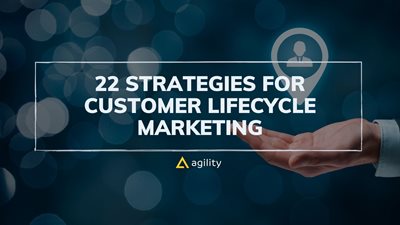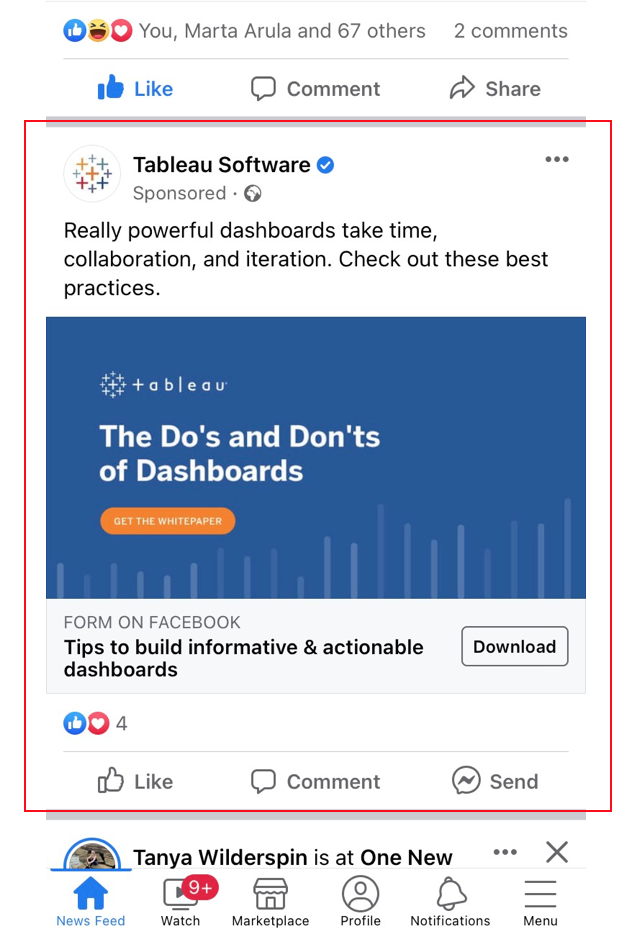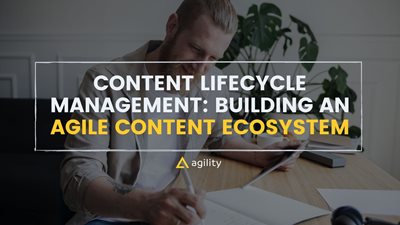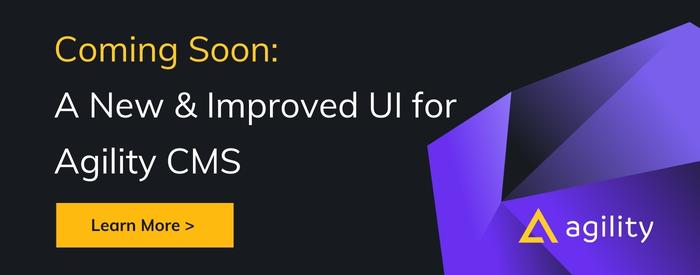22 Strategies for Customer Lifecycle Marketing
Take your customer lifecycles to the next level


Customer lifecycle marketing is utilized primarily by e-commerce and online businesses. Knowing the behavioral patterns of consumers helps marketers come up with specific strategies tailored for each phase.
It is rare for customers to make a purchase when first encountering a brand, and it takes even more time and effort to keep them returning - this is where customer lifecycle marketing comes in handy.
This strategy is on customer focus - attracting new, retaining the existing, and turning customers into loyal brand advocates.
What is the customer lifecycle?
Customer lifecycle reflects different phases of consumer thought process and behavior when considering a product or service. The customer lifecycle generally comes in five main steps - awareness, consideration, purchase, retention, and advocacy.
Understanding this cycle helps businesses plan and adjust marketing strategies according to each behavior, moving them from the acquisition phase to purchase to loyal customers and brand advocates.
Customers go from stage to stage, some may drop out, some join again at a different point, and some might drop and start the cycle again.

Five stages of the customer lifecycle:
1. Awareness
In the awareness phase, your prospective customers only find out about you; they become conscious about your company and your products or services.
The awareness stage is about making your brand stand out from the crowd, establishing yourself in the market. Creating brand awareness isn’t easy in today’s oversaturated e-commerce and online world due to the Covid-19 driven e-commerce boom.
This stage can be a challenge for many businesses. Therefore, it is essential to get your marketing strategy right.

2. Consideration
In the consideration stage, your customers are already familiar with your brand, along with other options - your competitors. They are now aware that your business exists and are weighing up their options, contemplating the advantages and disadvantages, the cost, value for money, or product specifications. These things are essential to decide if the product or service is suitable for them.
They might go and visit your competitor's page, resources like blogs posts or more overall facts about the industry, customer reviews, or even your product pages; these can all play a huge role, so they are worth paying attention to.
3. Purchase
In the purchase phase, your customers have decided to buy your product or service. However, that is no reason to abandon customers at this stage in terms of marketing activities; there are still things that can go wrong. In fact, on average, a whopping 70% of customers leave the items in their carts.
Imagine you have already put in so much effort and money in creating awareness and consideration, you want them to go ahead with the purchase.
4. Retention
After you convert customers, the focus will be on customer retention and maintaining these relationships in the retention phase. It can be up to five times more expensive to acquire new customers than to keep existing ones, whereas only 18% of companies focus on retention, vs. 44% on an acquisition.
If you focus your marketing efforts also on the customer retention phase, it can help cut marketing costs and increase sales.
5. Advocacy
The last stage of the customer lifecycle is advocacy; in this phase, customers have developed closer relationships with your brand and have perhaps started promoting it to their friends and family already.
They become loyal customers, and you must treat them well and recognize them, so they remain loyal. Many brands and retailers tend to forget this phase, but it takes a lot of time, effort, and money to gain advocates.

Customer lifecycle vs. conversion funnel
The two terms customer lifecycle and conversion funnel are sometimes used interchangeably. Both are to describe customer relationships, often for marketing purposes.
A customer lifecycle is driven by actions, different phases that customers' minds go through. It is a cycle that happens repeatedly, where customers can drop off and join at any other point in time, often described by e-commerce businesses.
On the other hand, a conversion funnel is an end-to-end process, focusing on each stage for winning over and converting a customer, rather than thinking about it as a cycle. Each step describes a phase where the buyer's journey leads up to the main event - purchase.

What is customer lifecycle marketing?
Customer lifecycle marketing helps determine the best tactics for each stage to increase awareness and conversions and maintain customer loyalty and advocacy. It is about recognizing which marketing activities fit best and guiding customers through each cycle step.
Marketing actions according to the customer lifecycle are adjusted to what works best for consumers at each cycle stage to forge closer customer relationships and understand how to provide the most value in each step.
In a nutshell, e-commerce businesses use a customer lifecycle marketing strategy to help them plan and structure their personalized marketing plan to help their customers move effectively from stage to stage, increase conversions and reduce customer churn.
Customer lifecycle marketing strategies
Below, we will look at the best marketing strategies according to each customer lifecycle stage and bring some specific examples to get you inspired. We have included tips, examples, and ideas that you can apply yourself in your business.
Stage 1: The awareness stage
The awareness stage is an essential part of the whole marketing strategy, as, without awareness, it is hard to get people to buy.
For example, your possible customers can find you either through Google search, banners ads, social media pages, blogs, or by word of mouth marketing.
Start with customer lifecycle analysis - gather data about your customers to build personalized campaigns around these profiles. Primary aspects such as age, demographics, interests, where else they shop, which social media platforms they are on, or which channels they use most. It will help drive more conversions and markets across the most suitable channels.
The best digital marketing strategies to use to create awareness about your business stage include:
1. Search Engine Optimization (SEO)
In today’s competitive e-commerce world, coming up in the top search results (SERPs) is critical to get exposure in front of potential customers, either by optimizing your content, descriptions, or product tags with keywords.
What is more, along with SEO, make sure to focus on brand awareness - if people don’t know about your brand name, they won’t know how to search for it!
For example, how clothing retailer ASOS comes up at the top of the search results, and below the screenshot of the Google SERPs, and a screenshot example of how ASOS has ranked top with their brand name/keyword:


2. Content marketing
Instead of hard-selling, content marketing is a way to distribute information about the unique features, benefits, and values you can provide. This way, you can sell your value indirectly and avoid being pushy. Inbound marketing materials like blogs, case studies, and guides can help your customers move along the customer journey.
What is more, it is essential to plan and schedule your content well ahead of time, which can be incredibly challenging. Headless Content Management System tools like Agility can help - by automating content publishing and repurposing to get more done faster. It allows more focus on what matters, like coming up with an engaging content strategy. Check them out:
For example, HubSpot is an all-in-one CRM and marketing platform known for its blog, user guides, webinars, and educating online courses. They established themselves as an innovator in inbound marketing through informative content.

Another example is creating content your target audience needs, such as a guide to omnichannel marketing in 2022:
3. Pay-per-Click advertising (PPC ads)
Paid ads are still one of the top digital marketing methods to create awareness; Google reported they can boost brand awareness by more than 80%.
Optimizing your organic search on its own is often not enough, and for maximum results, SEO is best when combined with paid ads.
For example, how clothing brand Lacoste has paid for their website to come up first in the Google search results:

4. Social media marketing
Social media is excellent for building brand awareness through paid ads or user-generated content (UGC) across the most relevant platforms that fit your target audience. Small and medium-sized companies can significantly benefit, as some strategies are entirely free.
For example, how beauty and haircare brand Babyliss leverages user-generated content on TikTok to promote their brand through branded hashtag campaigns:

The awareness stage lets you see what works best for your business and what doesn’t. It is good to set aside some budget for each strategy and experiment to see, for example, which PPC ads across which networks create the best results.
Stage 2: The Consideration stage
Customers have already found out about you in the consideration stage and are already contemplating buying but haven’t entirely made up their minds yet. They are now considering several options and are on a mission to gather all the information available.
In this phase, your customers have questions, and your job is to answer them the best way possible through several marketing activities. For customers to understand the unique features, cost, benefits of your products or services, you could show this info through:
1. Customer reviews and testimonials
Customer reviews are more important than ever. Anyone can push their brand through marketing campaigns, but truthful information that real customers have written is best.
Nearly 80% of customers have said they trust online reviews as much as recommendations by friends and family, 87% consider reviews when choosing a restaurant, and 66% when shopping for clothing, data by Brightlocal, 2020.
For example, how clothing brand Shein displays their customer testimonials on their website:

2. Tutorials and how-to content on social media
Leverage your social media presence and use tutorials as a marketing tool. Combine information sharing with marketing. Platforms such as TikTok, Instagram, or especially YouTube can all be leveraged to show informative tutorial content through reels and videos.
For example, meal kit company HelloFresh uses their YouTube account to show “how to prepare” their meals in short 90-second video clips.

3. Offer product demos
Another way to spread the word about your brand is to make product demos readily available.
Allow your customers to reach you quickly; for example, if you are a SaaS company selling e-commerce solutions, make it easy for customers to contact you and schedule a demo call.
4. Answer questions through live chat
So that your customers can find all the information about your product as quickly as possible, make sure to offer a live chat function.
Moreover, make sure your customer service agents are trained to answer any questions about the products. Even if one crucial detail is missing, there is a risk they choose your competitor.
For example, Agility CMS has included a live chat function directly at the bottom of their landing page.
Stage 3: Purchase
Every retailer faces cart abandonment challenges. Research found that around 70% of the items added to the cart are abandoned, according to the Baymard Institute average of over 41 different studies.
What is more, one could analyze past customer data to see where drop-offs occur in the purchase process or gather feedback to find out why customers failed to complete their purchase. For example, if they had issues with payments, delivery times, product returns, or that they thought items were in the end too expensive.
Great marketing tactics in the purchase stage are:
1. Email marketing
You want to recapture the customers’ attention, and email marketing is one of the best ways to get them back to their baskets. Giving your customers a little push by sending them abandoned cart notifications with special discounts and offers to encourage the purchase completion can recover around 10% of the potential sales, found Tidio.
2. SMS marketing
SMS marketing is another excellent way to get people coming back for more. Giving your customers a little push by sending them text message notifications with exclusive offers, special discounts, or free shipping can increase traffic and conversions.

3. Retargeting display ads
Retargeting ads are popular among e-commerce businesses to lure back customers who have left the website. Website visitors get shown ads of sites they have previously visited and have gone without action. The aim is to make them complete the purchase where they left off.
For example, I recently browsed for a Tableau Software tool but left the site without further action. Recently, they targeted me with an ad for them on my Facebook feed.

Stage 4: Retention
The customer retention phase is about maintaining customer relationships that you have already established. As acquiring new customers takes much more time and effort, it is crucial to focus on this. There are several great techniques that you can leverage to make sure customers remain loyal.
Customer lifecycle marketing strategies to implement in this stage could be:
1. Combine email and SMS marketing
Similar to the purchase stage, you could retain your customers by sending them personalized offers, promotions, discounts, or exclusive offers in this stage of the customer lifecycle. It works well by combining SMS and email marketing strategies.

2. Gather feedback
You can use the post-purchase stage as an opportunity to gather information and feedback from your customers to implement improvements or send personalized offers.
Through this, you can loop in any valuable information - any doubts or problems your customers may have with your customer journey and improve that, so the customers would keep returning.
3. Newsletters
Keep your customers updated about any new product launches, new store openings, Black Friday holiday discounts, or any business updates in general that could keep your loyal customers interested through distributing a newsletter.
It is a simple yet effective way to keep in touch with your current customers and retain them. However, make sure not to overdo it - or you’ll end up in their spam folders.
For example, how sustainable clothing brand Patagonia has used a newsletter to promote a new design of their old staple piece.

Stage 5: Advocacy
Previously, marketing tactics often ended with the purchase phase; however, businesses realized the importance of customer advocacy over time.
Loyal customers can act as a powerful marketing tool, as they promote your products and services for free - your business can benefit from by-word-of-mouth marketing.
What is more, if your NPS score is high, it instantly attracts other customers. Naturally, consumers trust each other more than marketing campaigns.
Consumers at this stage have developed a positive attitude towards your brand. As the last stage of the customer lifecycle, it takes time and effort to reach it, and it’s essential to maintain and nurture these relationships.
Best customer lifecycle marketing strategies in the advocacy phase:
1. Loyalty programs
Loyalty programs can act as gamification to keep customers engaged, make them excited about the next steps and rewards. In fact, 63% of Gen-Z and Millennials have said they expect a brand to offer loyalty programs or wouldn’t consider them.
With the rise of online shopping, customers have countless options; offering a loyalty program in exchange will help keep them engaged and has become a necessity.
2. Referral programs
Such things as refer-a-friend promos can help keep customer engagement levels up. You can reward their willingness to recommend your brand or business to their friends and family by offering rewards for referral.
3. Net Promoter Score (NPS)
The NPS score is one of the most popular ways to measure customer sentiment towards a brand or a company, and it is an excellent tool for marketing and brand advocacy.
Customer loyalty is a crucial marketing tool for Apple, as people also buy into the experience and not just the product. Apple, for example, uses NPS on an ongoing basis to gather customer feedback. After each purchase, they ask the client how likely they will recommend the product to others on a scale of 1-10.

By giving personalized responses and adjusting your marketing efforts to fit the advocacy stage, you can close the customer relationships even further and remain loyal.
Leverage customer lifecycle marketing to connect with customers
It is more challenging than ever to stand out from the crowd with ever-increasing online competition. In an oversaturated digital marketing world, it is crucial to find the most cost-effective ways to convert and retain customers, so make sure to adapt your marketing strategy to fit these different customer lifecycle stages.

About the Author
Agility CMS is Canada's original headless CMS platform. Since 2002, Agility has helped companies across Canada and around the world better manage their content. Marketers are free to create the content they want, when they want it. Developers are empowered to build what they want, how they want.
- Get a demo for a personalized walkthrough.
- Try for FREE and experience Agility CMS.
- Contact us with your questions.
View Related Resources








